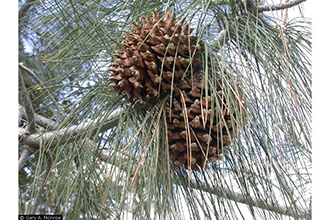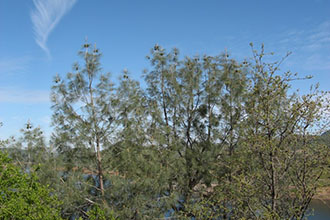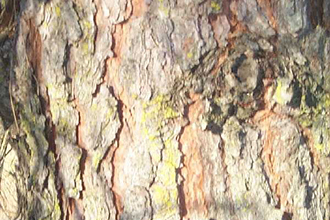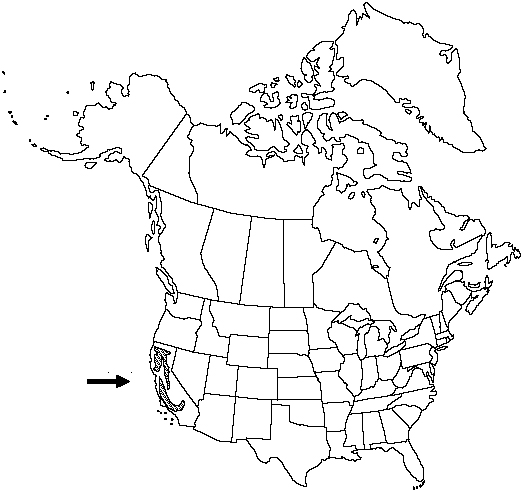Taxonomy: Kingdom - Plantae (plants). Subkingdom - Tracheobionta (vascular plants). Superdivision - Spermatophyta (seed plants). Division - Coniferophyta (conifers). Class - Pinopsida. Order - Pinales. Family - Pinaceae (pine). Genus - Pinus L. (pine). Species Pinus sabiniana Douglas ex Douglas (california foothill pine).
Ecology: Gray pine is a drought-tolerant, native evergreen conifer. Mature trees average from 12-24 m in height and from 30-90 cm in d.b.h. Trees usually maintain a pyrimidal growth form until the pole stage. Mature trees typically have multiple trunks. Gray pine is self-pruning, and lower branches are often a considerable distance above the understory. Gray pine grows a deep taproot where soil depth permits.
The bark of young trees is thin, while older trees have thick bark. Needles grow from 20-30 cm long and are shed every 2 to 3 years. Gray pine's heavily spined female cones are among the largest and most massive in the genus. Fresh cones average from 0.3-0.7 kg, and may exceed 1 kg. The cones are typically from 15-30 cm long. They do not form an abscission layer and are retained long after seeds are shed.
Blue oak-gray pine communities are fire climax and are replaced by ponderosa pine or other coniferous forests in the absence of fire. Gray pine readily establishes from seed on disturbed sites and is common in all seral stages of the blue oak-gray pine community. Young trees tolerate partial shade. Mature trees are shade intolerant.



